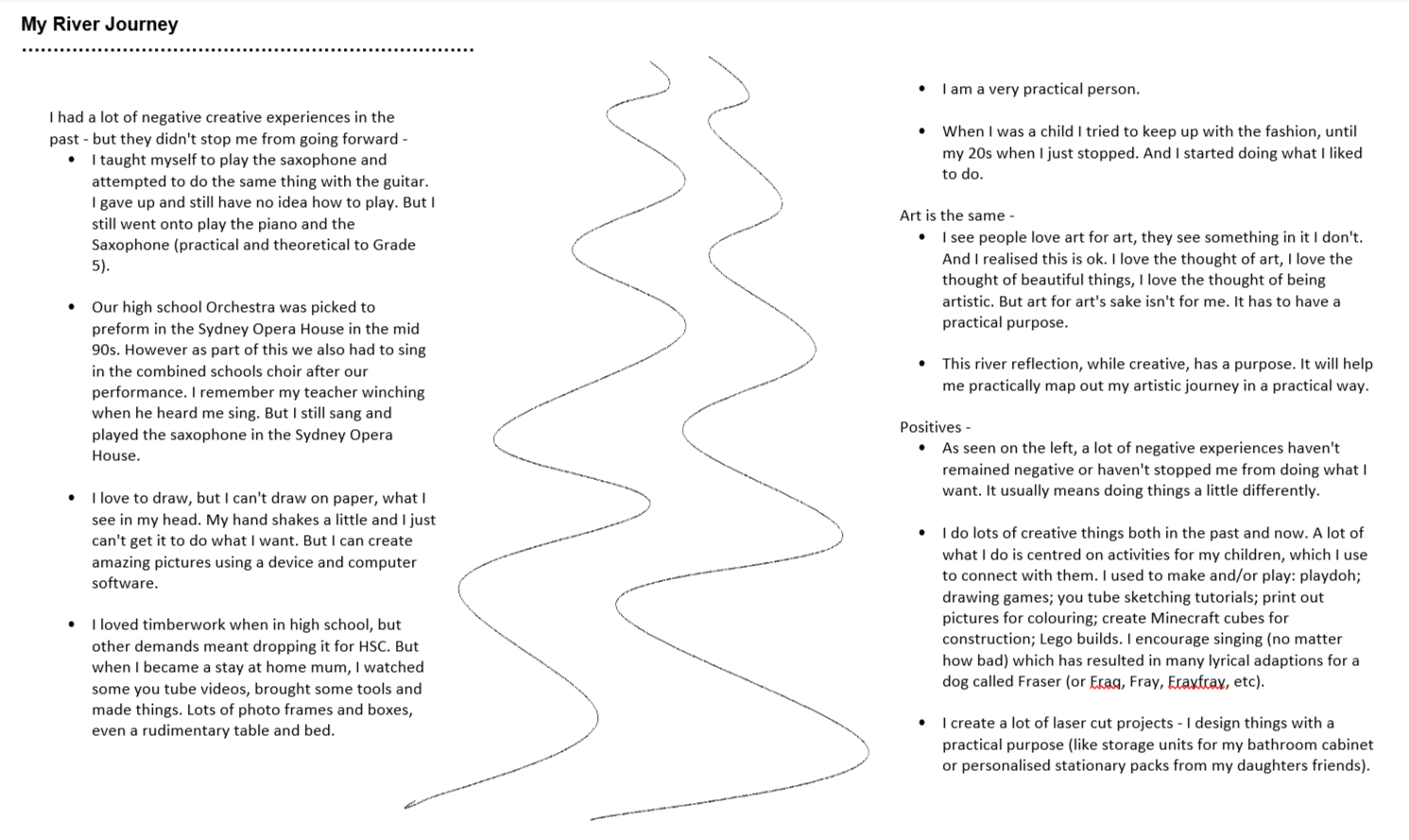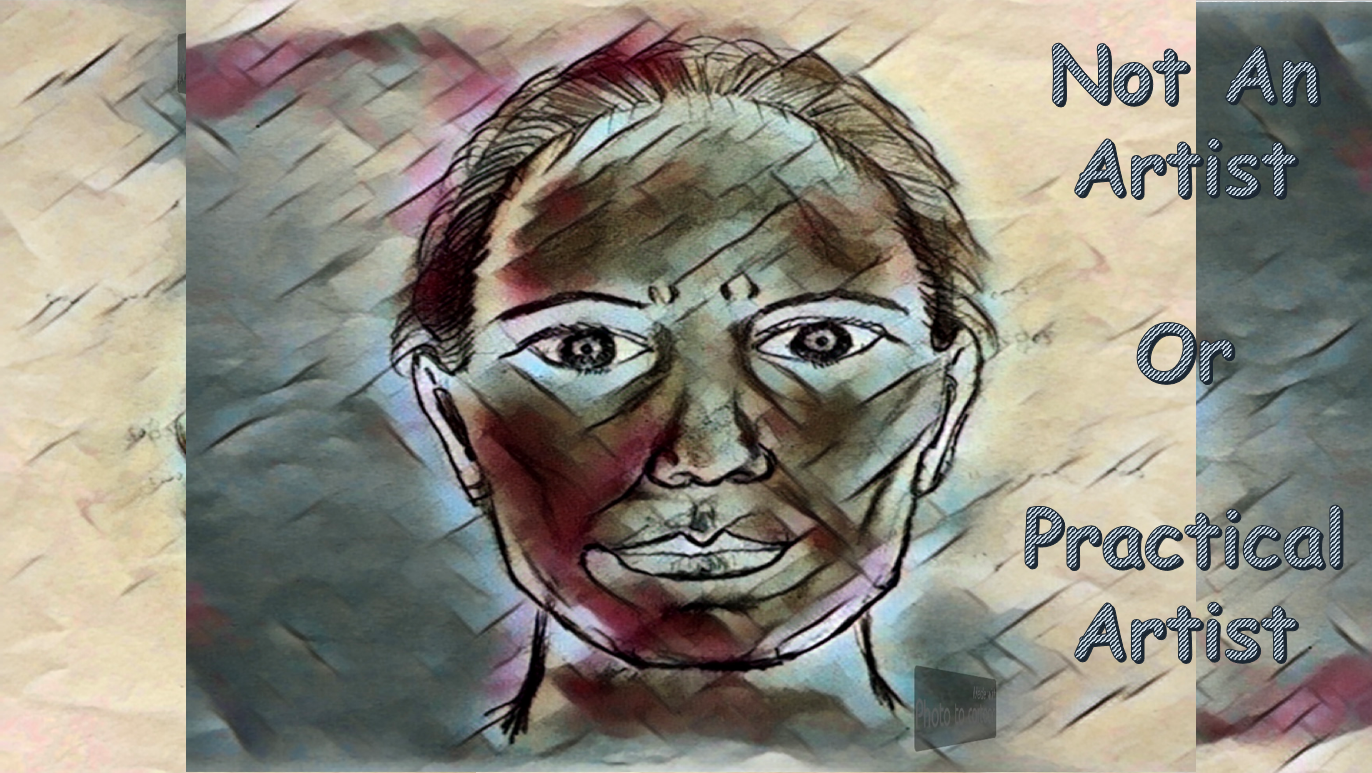Art Challenge One
My creative life - a book cover and 6-word novel
Everyone has a story to tell
Aim/Overview: "Introductory activity for Visual Arts and Media Arts. This task asks you to reflect upon your own arts and creative history. Work out the key themes. Have a go at a self-portrait using a couple of different styles and then digitize it. Use what you’ve made to create a ‘book cover’ that includes a six-word novel and one of your portraits. This is about reflecting upon your own skills and experiences and then extending those through engaging with some examples from the art and design worlds. The task also asks you to explore your work manipulation by using digital technologies to create a media product" (CQU, 2021).
Year level: Level 6 - Curriculum - Level 5-6 ACAVAM114 - "explore ideas and practices used by artists to represent different views, beliefs and opinions" (CQU, 2021). "Develop and apply techniques and processes when making their artworks, plan the display of artworks to enhance their meaning for an audience" (CQU, 2021).
1. River Reflection - everyone has a story
Reflecting and responding to this activity: I liked doing this activity. I'm not sure I completed it correctly, as I think I wrote too much detail. However, as it's my work, then I choose to do it this way. This activity was the beginning of my art journey. It is a journey of who I am and who I am as a teacher (more on this later as this pertains to responding to art in its completed form (ACARA, 2015)). As an artist, I see this as an awaking of a thought process I didn't have before. This including listing everything that I do that is considered art, but at the same time not considering myself an artist. As an audience, I see many words, someone who uses words to describe rather than pictures. To expand on this, I think of a newspaper article and cartoon describing the same event (usually political in nature). Still, one uses words and the other uses pictures with some contextual language. This activity was meant to be like a cartoon with some contextual language; instead, the artist wrote an opinion piece.

2. Self-portrait - working with paper and drawing materials
|
|
|
Self-portrait:
Having completed this worded portrait, I then felt ready to create the self-portrait. This is part of the making strand of the Curriculum in learning about and using knowledge, skills, techniques, processes, materials and technologies to explore art practices (ACARA, 2015). With a self-portrait plan, I started looking for youtube videos designed for children to help me learn how to draw a self-portrait. Opening myself up to this then encouraged me to find more youtube videos. That is, I continued to explore further based on things I found interesting. This is what I created. 
Cubist Self-portrait:
|
|
 |
Stylise self-portrait with App:
|
||
 |
|
|
|
|
||
Extention: explore making a portrait in different styles:
.jpg) |
|
|
|
Consider ways to frame a portrait:
| |
|
3. Identify keywords and feelings:
Explore different ways to summarise a story in six words. Explore your story in six words: can't art, can art, practically purposeful.
Not An Artist: The journey of creating a six-word novel was interesting. It mirrors my journey through this art activity. I have never thought of myself as an artist because I can't draw or paint. I don't appreciate art hanging in the art gallery (although I appreciate that others can and have always wanted to do the same). Also, I wouldn't say I like modern art; many things don't seem to make sense to me; I don't understand it and therefore can't appreciate it. So I wasn't an artist.
Or: Then I realised I was an artist. I create many things and have sold many things in the past. But I never thought of myself as an artist. Because these things I do are practical items. Everything I create, use and have in my home is practical. If they happen to be pretty, then that's a bonus. As I said in my introduction, I come from an artistic family; I didn't realise it or call it art. I have played in the Opera House but don't call myself a musician. I have created many laser cut products but have never called myself an artist. I have created photo frames, a table and even a bed, but I never called myself a woodworker. But I think I am. I am an artist.
Practical Artist: Finally, through this experience, I have learnt that my kind of art has a name, practical art or identified as 3D in the Australian Curriculum Art. My artwork is practically purposeful, and I appreciate the work that goes into this type of artwork.
4. Design your Book Cover:
Elements of colour: In the cubism portrait, I used the colour scheme - triadic colour scheme to provide a background. This time I decided to use a dark-light theme to convey change.
Process: I used PowerPoint and overlapped the picture three times to create defined lines between dark and light. The words for the novel evenly placed over the line between light and dark. The novel summarises the journey of not thinking of myself as an artist to thinking of myself as an artist.
Fonts: comic sands was chosen for practical reasons. Children with Autism can read this font easier, and this is the reason for choosing this font.
Reflection: as an artist, I can see the meaning of my novel; however, I don't think I know enough from an audience's perspective. This is again another area that I need to develop an understanding of the concepts. What is the philosophical or ideological perspective of this artwork? I honestly cannot say. I created something that had meaning to me, but I don't know the historical, social, or cultural context of the artwork. So, this is an area I need to develop


.jpg)
